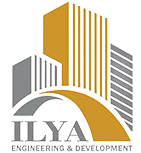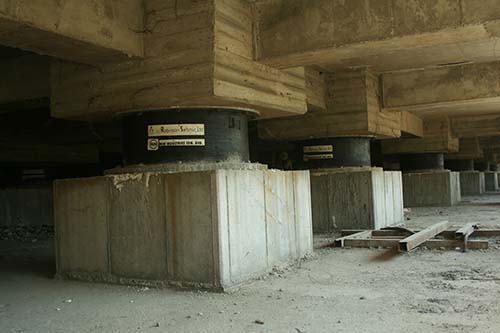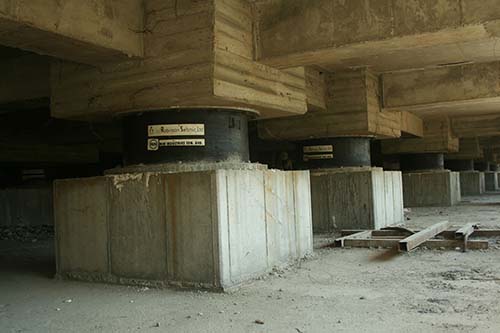Seismic retrofitting is a process of strengthening existing buildings and structures to make them more resistant to earthquake shaking and ground motion. Seismic retrofitting can help protect against the destruction caused by earthquakes, saving lives, property, and money. Seismic retrofitting also help increase the resiliency of communities in areas prone to seismic activity. In this blog post, we’ll discuss what seismic retrofitting is and how it works. Seismic retrofitting is a process that involves strengthening and reinforcing existing structures to make them more resistant to earthquake shaking. Seismic retrofitting can include the use of seismic isolation systems, base isolation systems, bracing for walls and columns, improving the foundation of an existing structure, and adding stronger connections between various components of the building, or any combination thereof. Seismic retrofitting techniques have been used successfully in many countries where earthquakes are common. Seismic retrofitting offers several advantages besides reducing seismic risk. Seismic retrofitted buildings are often more energy-efficient as they require less energy to cool or heat due to better insulation materials being used during the retrofit process. In addition, seismic retrofits can also help increase resiliency and improve the overall performance of a building, making it more resistant to damage, fire, and other threats. Seismic retrofitting is not only an effective way to reduce seismic risks, but also a cost-effective one. Seismic retrofits can be completed in a relatively short time frame at a fraction of the cost of constructing an entirely new structure with updated earthquake standards. Seismic retrofitting offers enhanced safety and security for existing structures without breaking the bank. Seismic retrofitting is just one part of earthquake preparedness and should be used in combination with other measures such as developing emergency plans and creating early warning systems that help alert people when an earthquake is about to strike. By taking proactive steps towards earthquake preparedness, we can help protect lives and properties in the event of an earthquake. Seismic retrofitting is just one tool to make buildings more resistant to seismic activity, but it can have a major impact on reducing damage from earthquakes. Seismic retrofitting is an important step in making communities safer and helping them prepare for future seismic events. With the right knowledge and preparation, we can reduce the risk of destruction caused by earthquakes and ensure that our buildings are as safe as possible.
Seismic retrofitting offers many benefits including increased safety, improved energy efficiency, reduced maintenance costs, improved resiliency, and cost savings when compared to new construction. Furthermore, if done properly, seismic retrofitting can help save lives during an earthquake. Seismic retrofitting should be considered an important part of any building’s seismic safety plan. If you live in an area prone to seismic activity, it is important to consider the benefits of earthquake retrofitting and take steps to protect your property from earthquakes. Seismic retrofitting can help save lives and reduce the amount of damage caused by earthquakes, making communities safer and more resilient. For more information on earthquake preparedness and seismic retrofitting, contact your local Seismic Safety Commission or visit SeismicSafetyCommission.org. Seismic retrofitting is just one part of a comprehensive risk reduction strategy that should be used in combination with other measures such as emergency planning and early warning systems. By taking proactive steps towards earthquake preparedness, we can help protect lives and properties in the event of an earthquake. Seismic retrofitting is just one tool to make buildings more resistant to seismic activity, but it can have a major impact on reducing damage from earthquakes. Seismic retrofitting is an important step in making communities safer and helping them prepare for future seismic events. With the right knowledge and preparation, we can reduce the risk of destruction caused by earthquakes and ensure that our buildings are as safe as possible.
Seismic retrofitting is just one part of a comprehensive risk reduction strategy that should be used in combination with other measures such as emergency planning and early warning systems. By taking proactive steps towards earthquake preparedness, we can help protect lives and properties in the event of an earthquake. Seismic retrofitting offers many benefits including increased safety, improved energy efficiency, reduced maintenance costs, improved resiliency, and cost savings when compared to new construction. Seismic retrofitting is an important tool to make buildings more resistant to seismic activity and can have a major impact on reducing damage from earthquakes. Seismic retrofitting is an important part of any building’s seismic safety plan and should be considered when preparing for future seismic events. With the right knowledge and preparation, we can reduce the risk of destruction caused by earthquakes and ensure that our buildings are as safe as possible. Seismic retrofitting is just one step towards a more resilient community, but it is an important one.



No comment